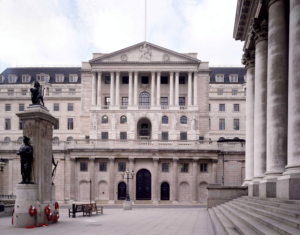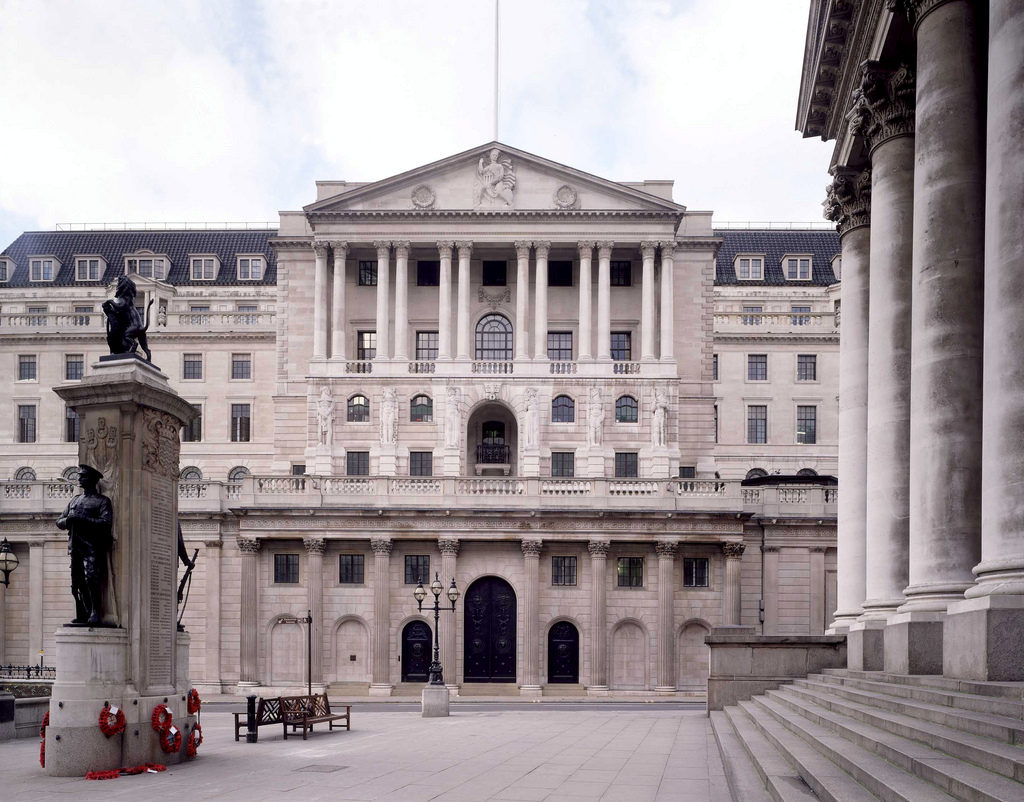21 January 2021
The Great Government Bond Carousel
Profit (for traders) and Loss (of central bank independence)
by Frank O’Nomics
 Nice work if you can get it. On one side of the trade stands the Bank of England, on the other HM Treasury. In the middle, a group of investment banks making sizable profits with minimal risk, laughing all the way to the, er, bank.
Nice work if you can get it. On one side of the trade stands the Bank of England, on the other HM Treasury. In the middle, a group of investment banks making sizable profits with minimal risk, laughing all the way to the, er, bank.
The process of buying bonds with freshly printed money, known as quantitative easing (QE) has, for the last 10-12 years, been purportedly used as a way of stimulating the economy. In the UK QE has been more formally expressed as being calculated to keep inflation close to the 2% target. The logic seems very clear, but in recent experience the motives look a little murkier. There is a seemingly strong correlation between the amount of bonds that the Bank of England has been buying, with the bonds being issued to finance the costs of the pandemic by HM Treasury. Rather than being a tool to stimulate inflation, gilt purchases by the Bank seem to have been taking place to ensure that the vast level of gilt issuance does not cause a rise in the long-term costs of funding the budget deficit. Is this really the case? And, more importantly, does it matter?
A recent FT survey of the top 18 investors in UK government bonds showed that most of them believe that current QE exists solely to ensure that the Bank buys sufficient government bonds to keep interest rates at low levels. The Bank would disagree. The Governor, Andrew Bailey, recently stated that QE is not set at a level that is “in any way related to what the government is going to borrow.” The Bank has to buy bonds in the open market, rather than doing so directly from the Treasury to demonstrate that it is acting independently. The data suggests otherwise. The Bank of England has announced £450bn of QE this year, compared to a total financing remit that the Treasury has set of £485.5bn. Take away the amount of funding raised in a normal year and you are left with 2 numbers that are remarkably similar. Just because the bonds purchased are different to those being issued does not negate causality. Either the investment community is being excessively cynical, or there is a huge coincidence.
Does any of this matter? In many respects keeping long-term interest rates low and stimulating the economy are not mutually exclusive. The idea of QE is that those who sell bonds to the Bank then reinvest the money into the broader economy. If the seller of the bonds is in fact the government, rather than institutional investors, this may not matter given that the government is itself pumping money into the economy. In fact, you could argue that this process is more effective, given that earlier rounds of QE seem to have generated asset price inflation, rather than much positive economic impact. There are, however, consequences that give cause for concern.
What happens if the Bank stops buying and the Treasury carries on issuing huge amounts of debt? The simple rules of supply and demand will apply and borrowing costs will rise. This will make it harder for the government, companies and households to service current excessive debt levels and the recession will become a full-blown depression. The chances of this scenario are quite high. Inflationary pressures resulting from both the pandemic and Brexit are starting to develop, and it will become harder for the Bank to justify buying more bonds if the inflation target is being met and exceeded.
The Bank has expressed a willingness to maintain a loose monetary policy, within reason, even if inflation does start to rise. This scenario could also be damaging, as it risks causing inflation to get out of hand. Some greater degree of (modest) inflation is probably beneficial as it will help to reduce the value of government (and other) debt in real terms, This may well be at the heart of the Bank’s policy, and it is interesting to note that the levels of inflation-linked debt that have been issued are significantly below the usual proportions. This could in part be due to a belief that there is an upper limit to demand for this type of bond, but there must also be a reluctance to issue bonds that could be very expensive to fund when inflation picks up.
Beyond these concerns there is an obvious consequence for savers. Interest rates are not only lower than they should be, but are negative after taking account of inflation. The buying power of our savings is being steadily eroded. Beyond this, our pension funds, which hold gilts as the “risk free” asset, are being forced to buy at artificially low yields, locking us in to long-term penury.
There are two other implications of the debt carousel that should be considered. The main one is that it calls into question the independence of the Bank of England. Fiscal and monetary policy coordination is one thing, but when the government’s approach to the former is dictating the Bank’s management of the latter, that independence becomes a sham. The other point is that, because both the Treasury and the Bank of England have to operate in the open market, a potentially very profitable opportunity is created for the investment banks that act as the middlemen in the trade. If you are in any doubt as to how lucrative this role might be, take a look at the recent profit levels of the fixed income trading teams at investment banks. At least this creates something for the government to tax when it comes to paying pandemic bill.


